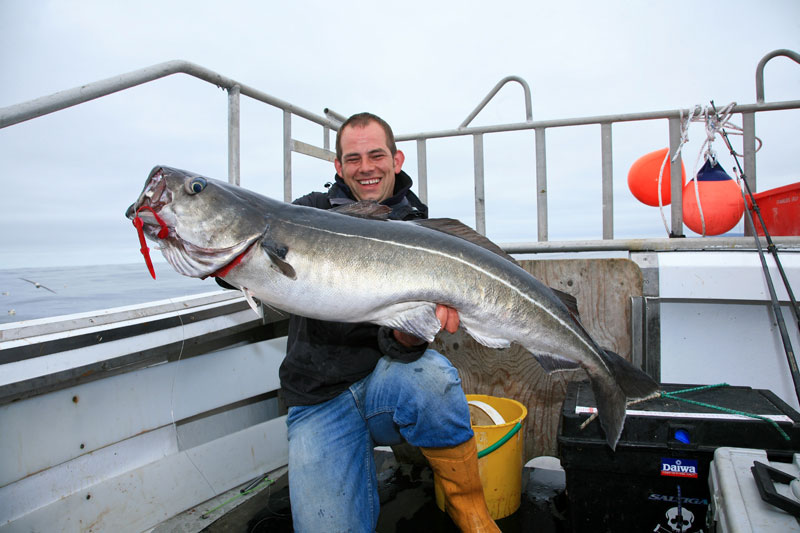Pollachius virens

Other Names
Saith, Poddlie, Queeth, Geek, Poddler, Black Pollock, Black Jack, Sillock, Sey, Glashan, Cuddie
Distinguishing features
The coalfish is similar to the pollack in body shape although the larger specimens tend to have a rounder cross section. The first anal fin starts below the gap between the first and second dorsal fin. The back is a very dark greeny blue which merges sharply into silvery white on the sides and belly. The lateral line is light coloured. Small specimens over kelp may have a golden sheen to the sides.
Size
Coalfish can grow to a length in excess of 130 cm and weigh over 15 kg particularly in northern waters.
British Record Fish List
UK Shore Record: 24lb 11oz 12dms / 11.219kgs
UK Boat Record: 37lb 5oz 0dms / 16.923kgs
European Line Class Record for this species

Habitat
Immature coalies can be found in great numbers in the shallow water around the north of the UK and Ireland. They will inhabit water up to 250 metres deep and over all sorts of sea bed. The coalfish will work through the sea layers from the bottom to the surface in search of food.
Food
Large coalfish feed almost exclusively on fish particularly on members of the herring family. Smaller fish feed on sandeels, capelin and crustaceans.
Bait
The smaller coalfish will take most baits but favourites with the shore angler include peeler crab, mussels and worms.
Lures
The boat angler will target the coalfish almost exclusively with lures. Strings of feather or small eels can be very effective for the smaller fish. Larger specimens are best fished for using a plastic eel such as a Redgill, plastic worm or large shad retrieved on a long trace. Feathers and spinners will also take fish from the shore. Casting small pirks can also be effective in deeper water.

Pollack (left) and Coalfish (right) – photo courtesy of Mike Concannon
